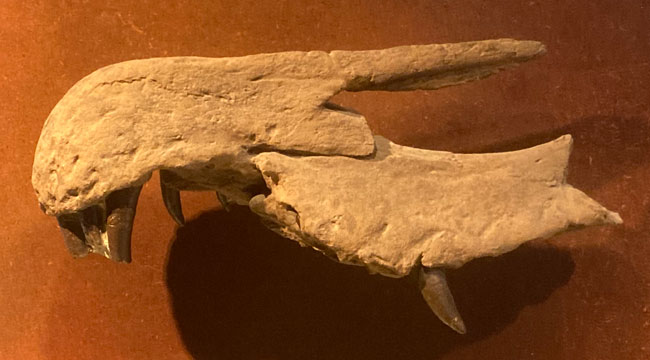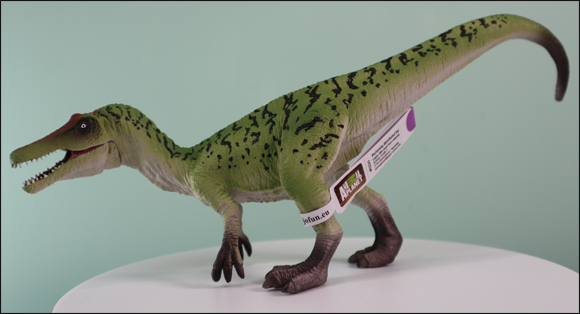Team members at Everything Dinosaur took the opportunity to photograph a cast of a Baryonyx fossil jaw on display at the London Natural History Museum. The cast is a replica of the original specimen number BMNH R9951. The holotype material was re-catalogued as NHMUK VP R9951. The British Museum was renamed the Natural History Museum in 1992. The fossils represent one of the most complete dinosaur skeletons found in the UK.

Picture credit: Everything Dinosaur
Fossils of this famous theropod dinosaur were excavated from a clay pit near Ockley in Surrey in 1983. The field team was led by palaeontologists from the British Museum (Natural History Museum). There is a cast of the Baryonyx skeleton on display in the dinosaur gallery at the museum.
Baryonyx walkeri
Named and formally described in 1986, Baryonyx changed perceptions regarding spinosaurids. The scientific paper was published in “Nature”. It was entitled “Baryonyx, a remarkable new theropod dinosaur”. The authors of the paper were Alan Charig and Angela Milner. Both palaeontologists had distinguished careers. Alan Charig helped to popularise the science of vertebrate palaeontology when he wrote and presented the BBC television series “Before the Ark”. However, it is probably for their work on Baryonyx walkeri that they will be best remembered.

Picture credit: Everything Dinosaur
The picture (above) shows a typical Baryonyx dinosaur model. The figure is from the Mojo Fun Prehistoric and Extinct collection.
To view this model range: Mojo Fun Prehistoric and Extinct Model Range.
The Baryonyx Fossil Jaw
The Baryonyx fossil jaw cast shows the premaxilla and the anterior portion of the maxilla. The holotype specimen includes a significant amount of skull and jaw material including both dentaries. Thanks to the skull and jaw fossils, scientists were able to reconstruct the skull of other spinosaurids such as Spinosaurus aegyptiacus.
A spokesperson from Everything Dinosaur commented.
“When we visit the London Natural History Museum, we like to view the Baryonyx exhibit. The fossils helped improve our understanding regarding theropod dinosaurs. The Baryonyx material representing about 65% of the entire skeleton still represents one of the most complete large theropod skeletons found in Europe.”
Visit the Everything Dinosaur website: Everything Dinosaur.






Leave A Comment